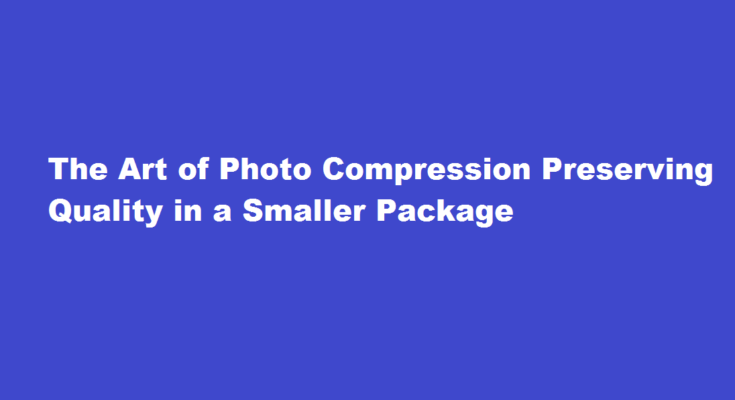Introduction
In today’s digital age, PDF (Portable Document Format) files have become the standard for sharing and storing documents. However, large PDF files can be challenging to upload, email, or store. Fortunately, there are various methods available to compress PDF files without compromising the quality of the content. This article aims to provide you with a comprehensive guide on how to compress PDF files efficiently, allowing for easier transmission and storage.
Understanding the Need for PDF Compression
PDF compression is essential for several reasons. Firstly, it reduces the file size, making it more manageable to share via email or upload on websites. Secondly, compressed PDF files require less storage space, allowing for better organization and efficient use of resources. Additionally, compressed PDFs load faster, improving user experience and accessibility. Whether you’re an individual, a business professional, or a student, learning how to compress PDF files is a valuable skill that can streamline your digital workflow.
Using Online PDF Compression Tools
One of the easiest ways to compress PDF files is by utilizing online compression tools. These web-based platforms provide a simple and user-friendly interface to upload, compress, and download your PDF files. Some popular online tools include Smallpdf, ILovePDF, and PDF Compressor. To compress a PDF using these tools, you typically need to upload the file, select the desired compression level or quality, and wait for the tool to process and generate the compressed PDF. Finally, you can download the compressed PDF file to your device. However, it’s important to note that online compression tools may have limitations on file size and require an internet connection.
Utilizing Desktop PDF Compression Software
If you frequently work with PDF files, investing in desktop software for compressing PDFs might be a worthwhile option. Applications like Adobe Acrobat Pro, Nitro Pro, and Foxit PhantomPDF offer robust features for compressing and optimizing PDF files. These tools allow you to fine-tune the compression settings according to your requirements. You can choose the compression method, adjust image quality, remove unnecessary elements, and even batch process multiple PDF files simultaneously. Desktop software provides offline access and greater flexibility in terms of file size and security.
Optimizing PDFs in Microsoft Office Applications
If you have the original document in a Microsoft Office format, such as Word, PowerPoint, or Excel, you can optimize the PDF during the conversion process. When saving the file as a PDF within the Office application, you’ll find options to adjust the file size and quality of images. By selecting an appropriate compression level, you can significantly reduce the size of the resulting PDF file without compromising the readability of the content. This method is particularly useful when you need to convert Office documents into PDFs and compress them simultaneously.
FREQUENTLY ASKED QUESTIONS
What is the best way to compress a PDF without losing quality?
The Acrobat online PDF compressor balances an optimized file size against the expected quality of images, fonts, and other file content. Just drag and drop a PDF into the PDF compression tool above and let Acrobat reduce the size of your PDF files without compromising quality.
How to compress PDF file size without losing quality on Windows?
Navigate to the Acrobat online PDF compressor on Adobe.com. You will see a large textbox with the title “Compress PDF size” and a blue button labeled “Select a file.” Click Select a File button and locate your PDF, or simply drag and drop it to the Compress PDF field. Select the compression level.
Does compressing PDF affect quality?
How to Compress a PDF in Power PDF. PDF compression can maintain the quality of your contents if you select the appropriate settings. Reducing the quality of a document, especially its images, can save quite a lot of space on disk, but at the expense of readability and usefulness.
Conclusion
Compressing PDF files is an essential skill that can improve your digital workflow by reducing file size, enhancing accessibility, and optimizing storage space. Whether you choose online compression tools, desktop software, or optimize PDFs within Microsoft Office applications, it’s crucial to strike a balance between compression and maintaining document quality. Remember to experiment with different compression settings to find the optimal balance for your specific needs.
By following the techniques outlined in this article, you’ll be able to compress PDF files efficiently without sacrificing important content or visual integrity. Embrace the benefits of compressed PDFs, such as faster loading times, easier file sharing, and efficient storage, while maintaining the integrity and readability of your documents. Start implementing these techniques today and witness the difference it can make in your digital document management.
Read Also : The Art of Photo Compression Preserving Quality in a Smaller Package



